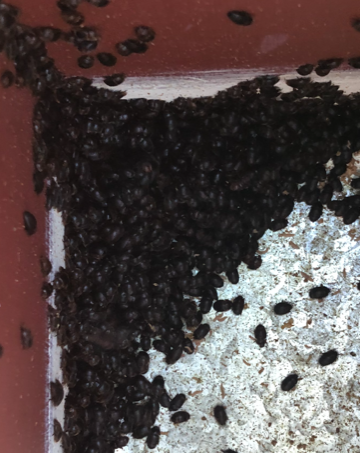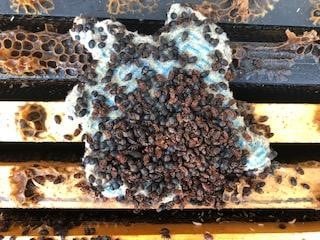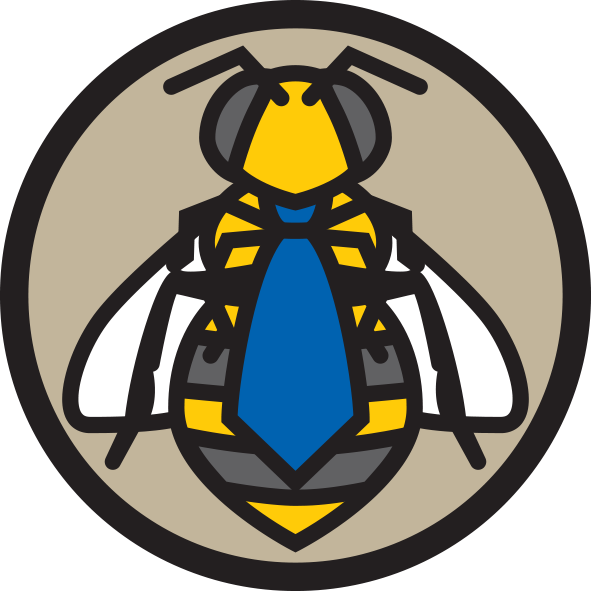This past season has seen a large increase in the numbers of small hive beetle (SHB) observed within beehives. Unfortunately, SHB is here to stay and they often make the most of an easy target – weakened bee colonies.
Most damage to hives from SHB is preventable if the beekeeper appropriately manages their bees.
Strategies to minimise SHB damage
Opening the hive
When working good hives, you will often see large groups of beetles corralled into an area under the hive mat or comb area between boxes, excluder or in a corner. The bees have worked tirelessly to drive those beetles into that prison, the moment the beekeeper disturbs all that hard work and they escape, the beetles immediately become a major risk. When experienced beekeepers see lots of beetles in the top box, its time to take action against SHB, they generally accept that working the hive that day will be counterproductive.


Above left: This colony was overwhelmed by beetles. The outbreak potential from one hive can be immense, so get it in the freezer to kill the lot. Above right: One Chux was not nearly enough…
Adding beetle traps
The best approach is to add beetle traps around where the beetles were concentrated and close it back up. If you haven’t disturbed the bees too much, then they will very quickly get back to herding beetles. If you cannot achieve that then removing honey boxes and tightening up the hive may work, but you cannot always justify doing that.
The next day (or next site visit) there could be hundreds of beetles inside each trap, and due to the sheer volume of SHB many of them may not be dead. It is best to quickly seal those traps into a large Ziploc bag and freeze them to kill any live beetles. If there are still lots of beetles in the hive then add new traps and close up again. If the beetle loading has dropped, it may now be safe to work that hive.
Managing colony size to prevent swarming
Through the swarming process, the colony will be under stress and vulnerable to SHB. Preventing swarming often prevents a lot of SHB issues, so by keeping your bees strong and having younger queens, you can reduce the risk. Everybody wants queens in spring, but many successful beekeepers do much of their re-queening work over summer and, depending on their location, right through to April (or winter in FNQ). New Year’s queens are unlikely to swarm the next spring, so they are an absolute pleasure to manage when the older queens are wanting to head for the trees.
Optimise management to reduce AFB risk
Another big cause of SHB damage is neglected or weakened colonies, especially if they are infected with American foulbrood (AFB). Unmanaged colonies are a major risk to SHB attack, because as the colony becomes weakened it will be targeted by both robber bees and SHB, causing a double whammy of AFB spread and SHB population explosion. A lot of hives that beekeepers put down as “being killed by SHB” were already infected by AFB, so they were probably first robbed and presented a major biosecurity risk.
Acknowledgements
- This article has been shortened and was originally published for ‘The Australasian Beekeeper, 123.3, September 2021 edition under the title ‘Managing hives to minimise damage from small hive beetle.’
- This article was edited by Erica Mo and peer-reviewed by Nadine Chapman and Mark Page.

